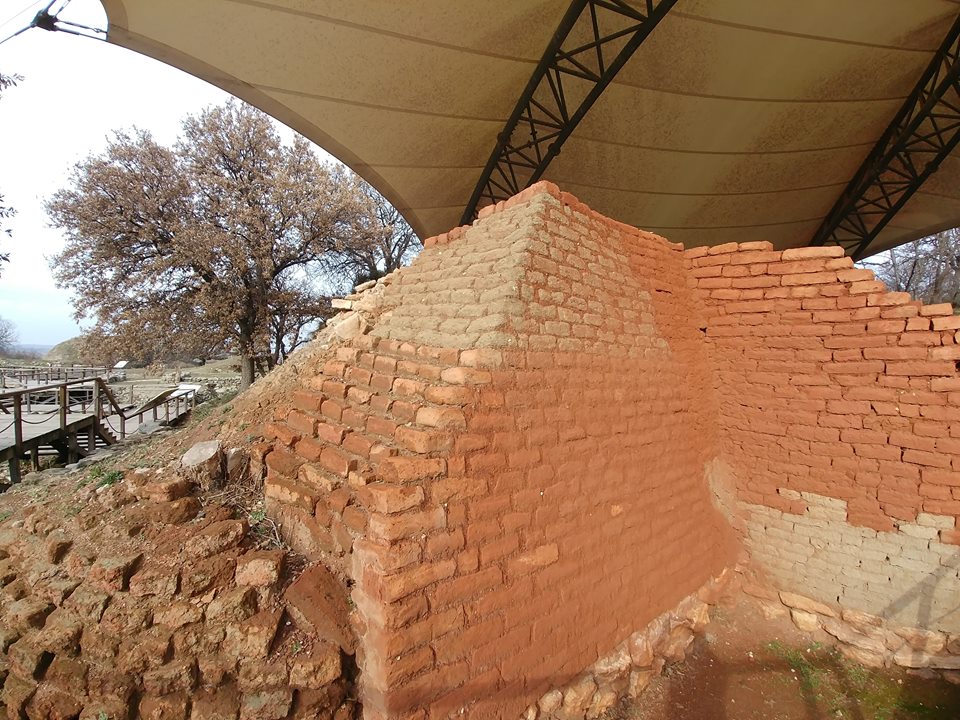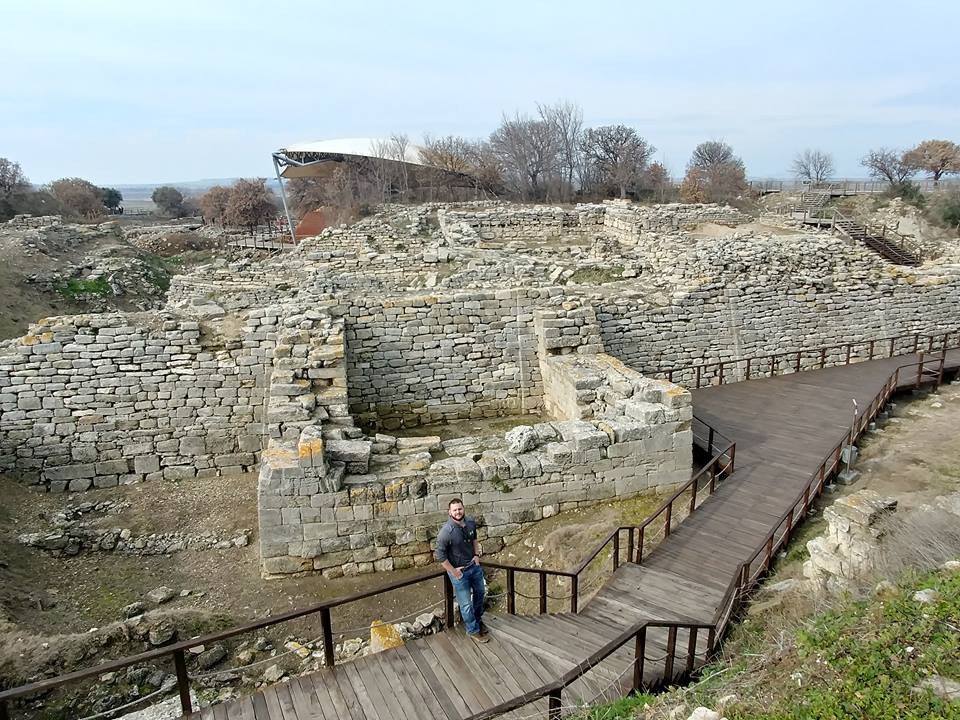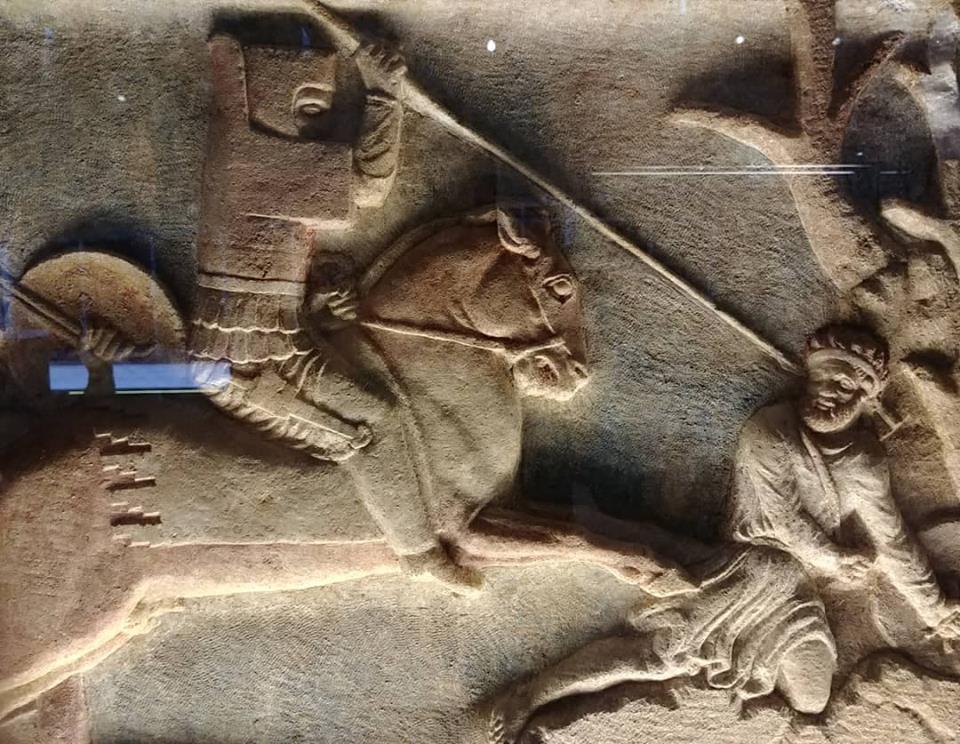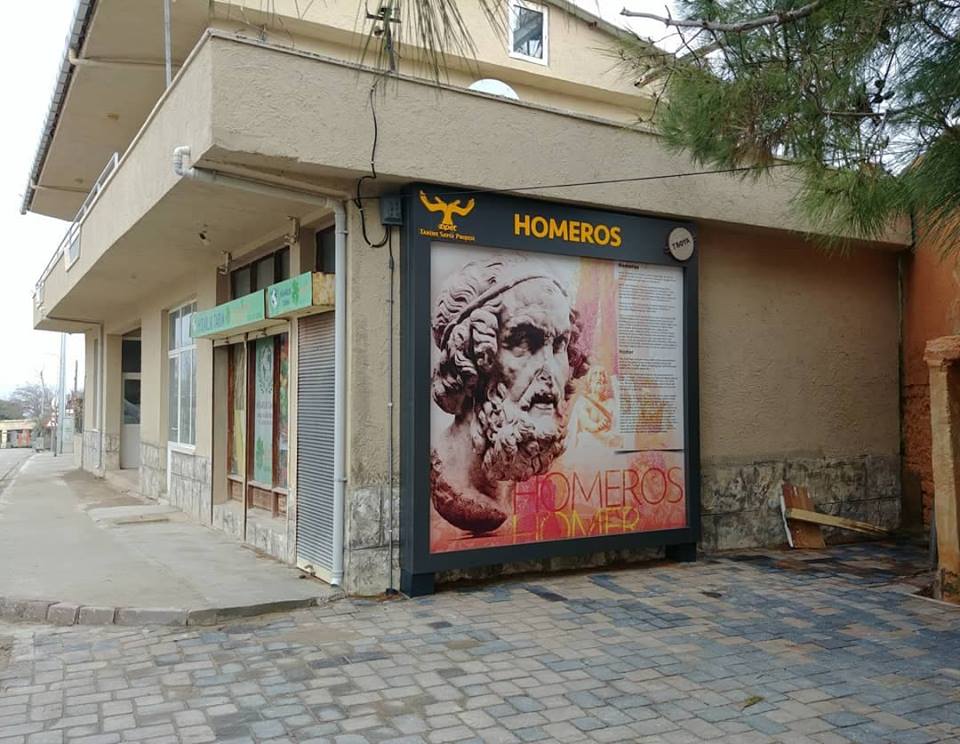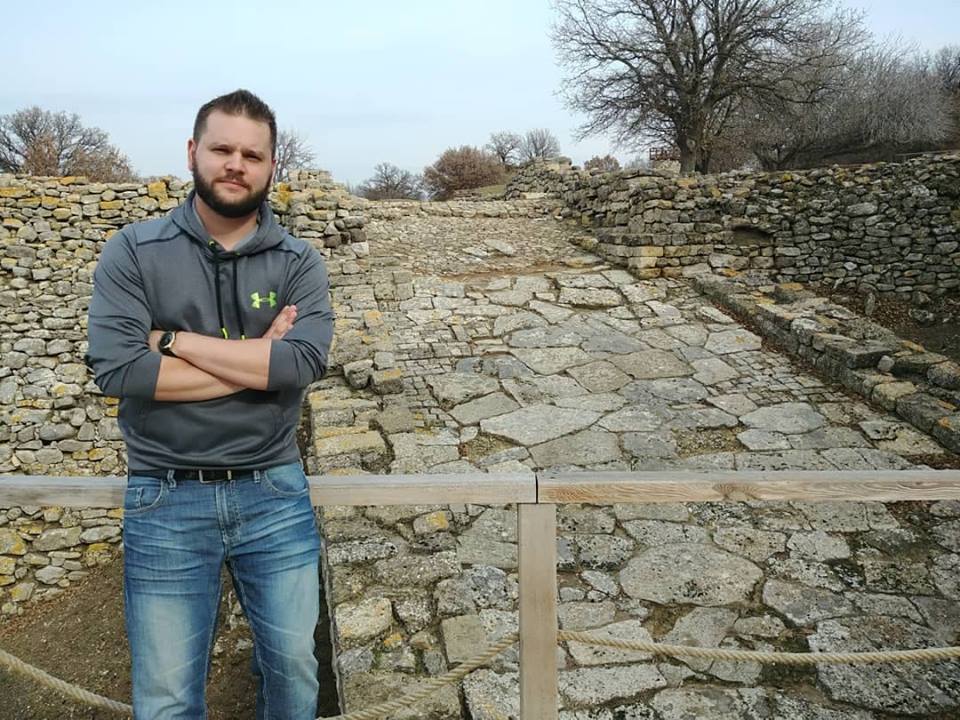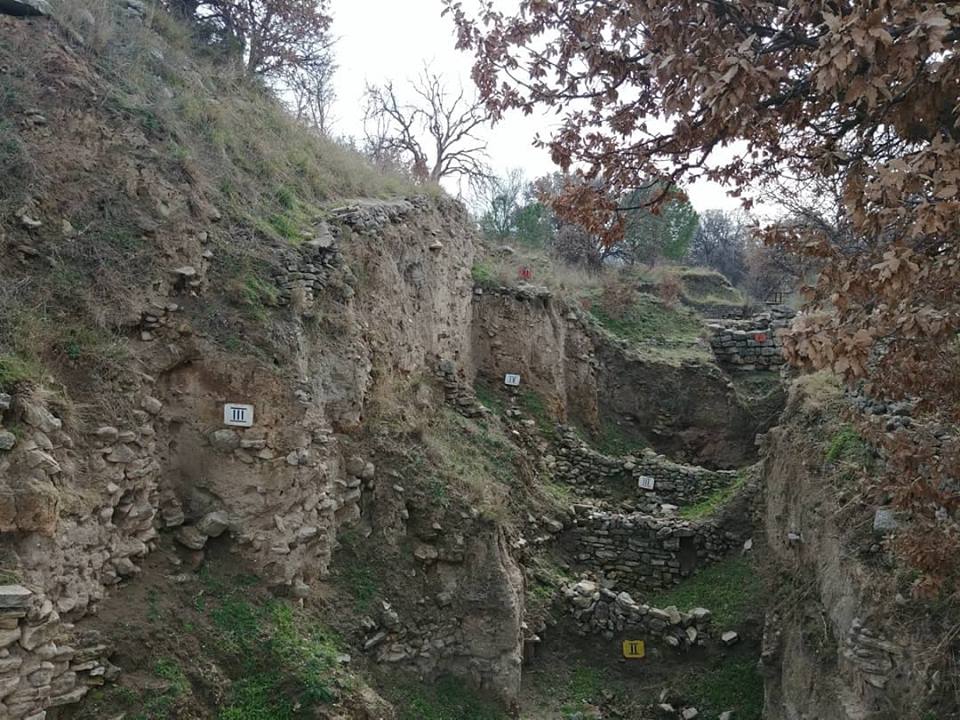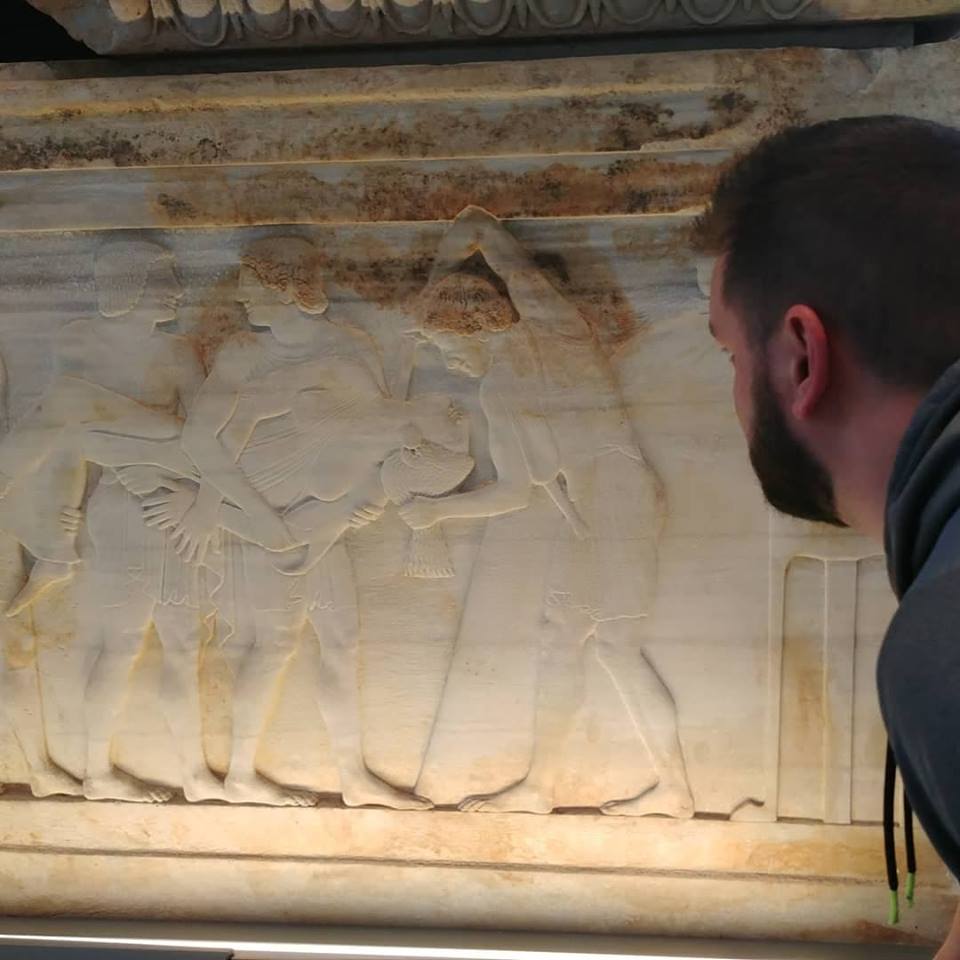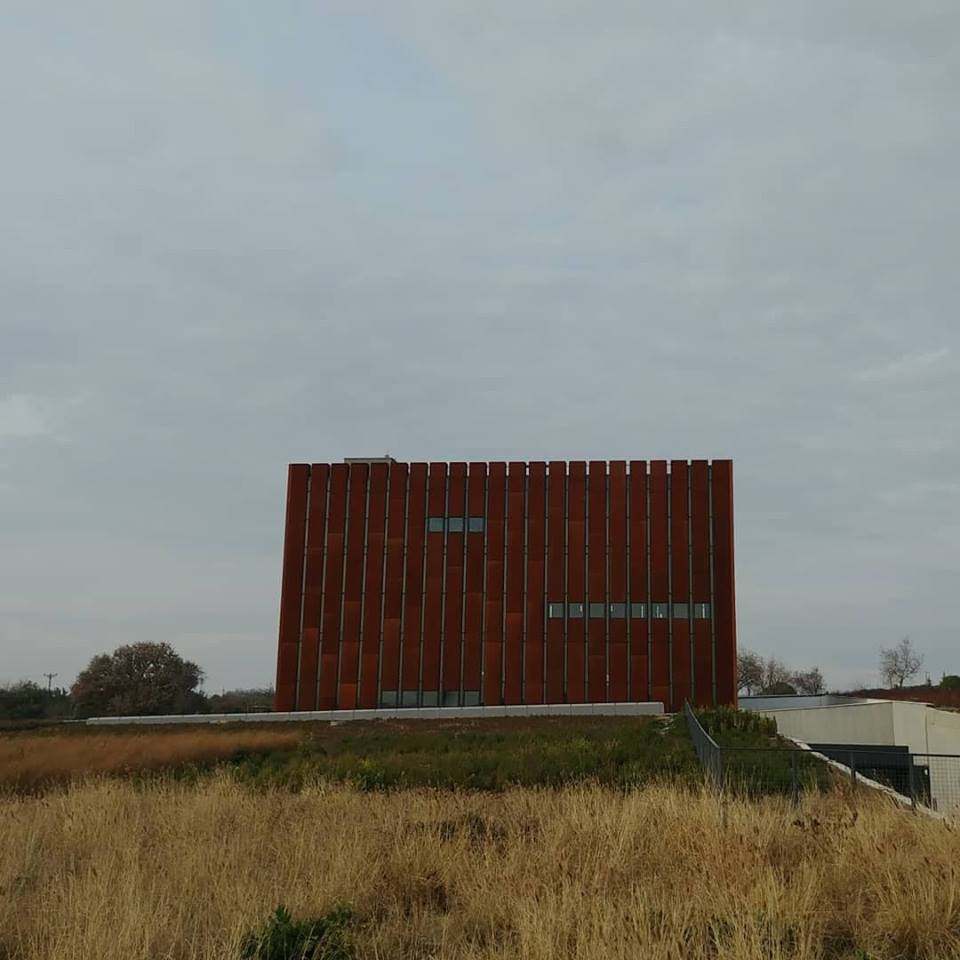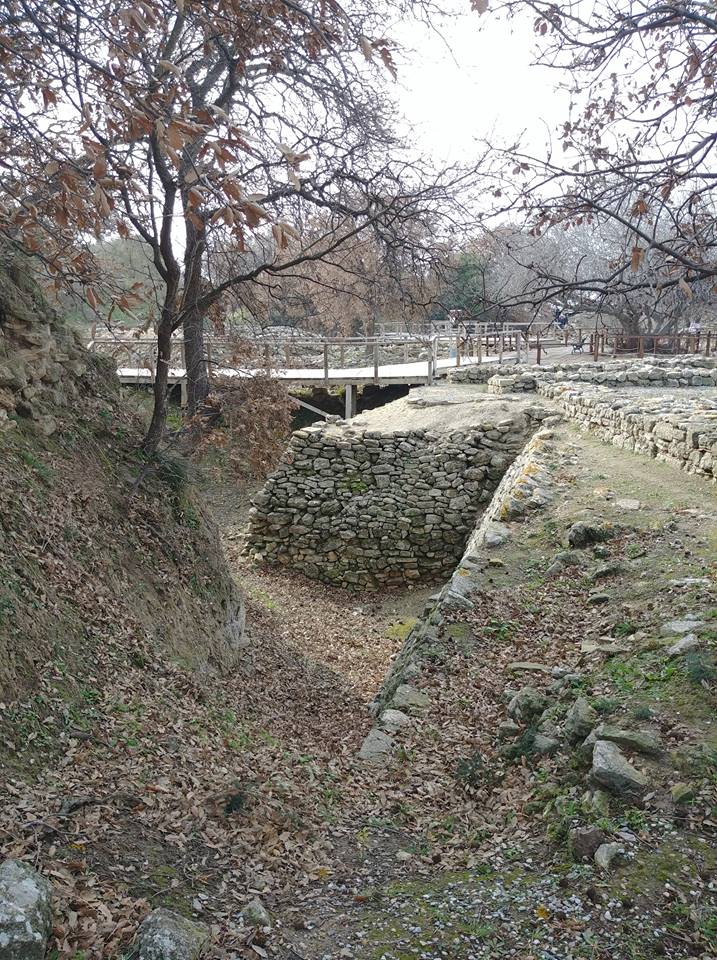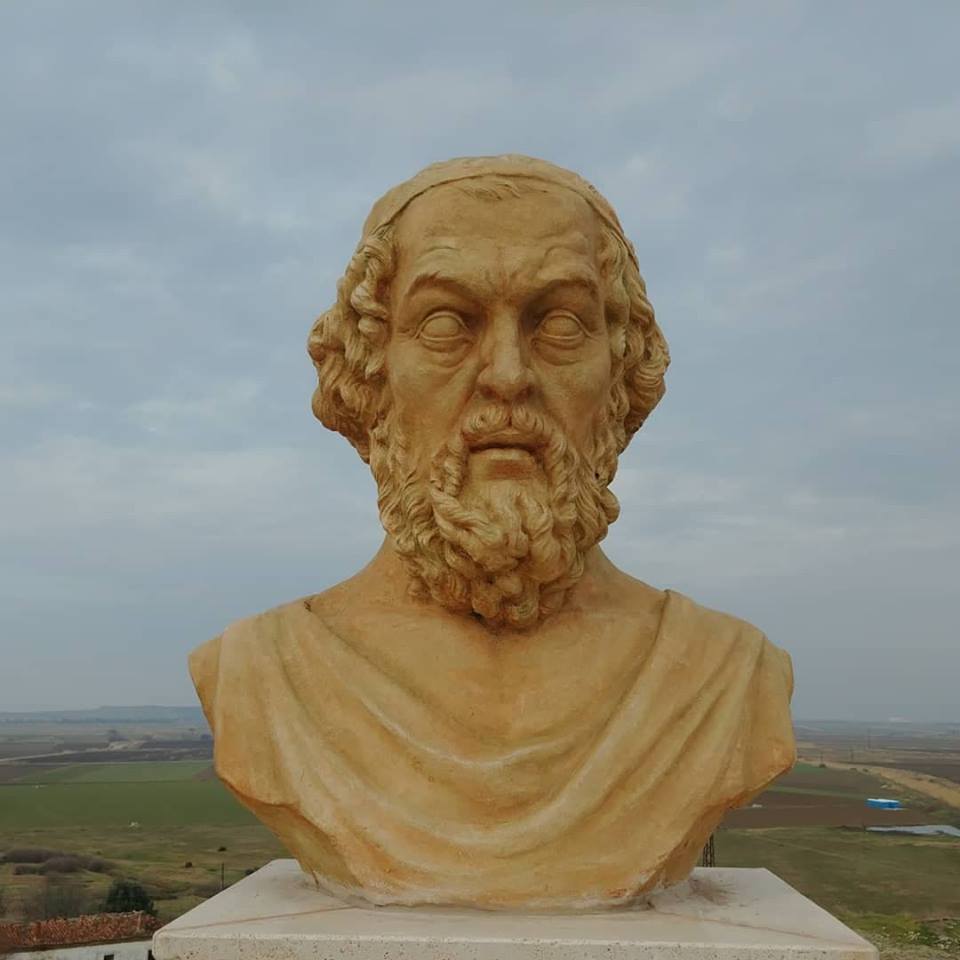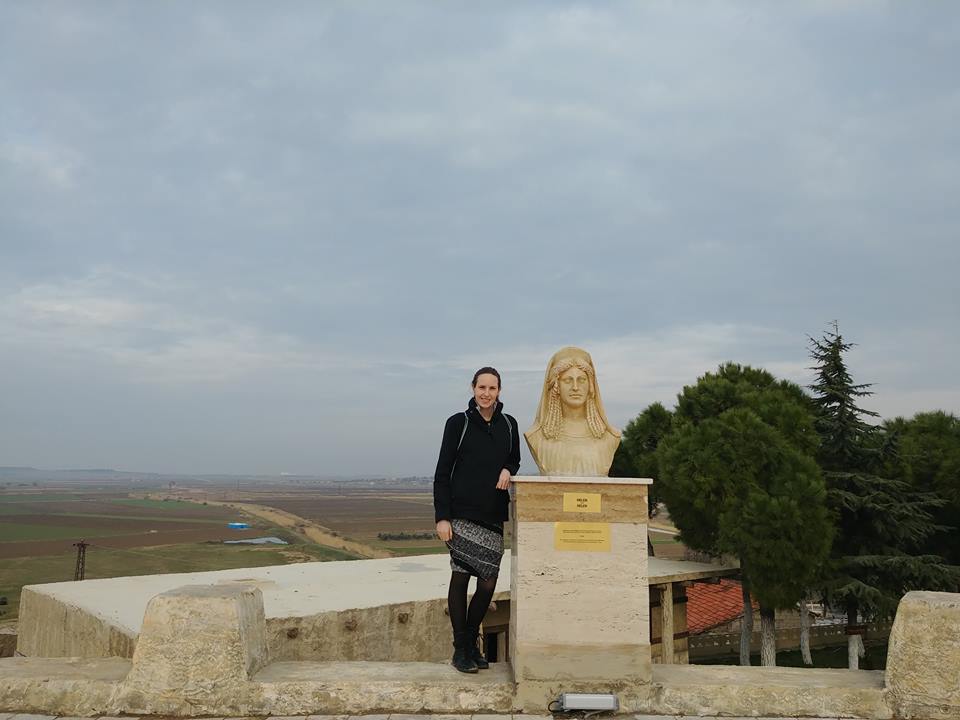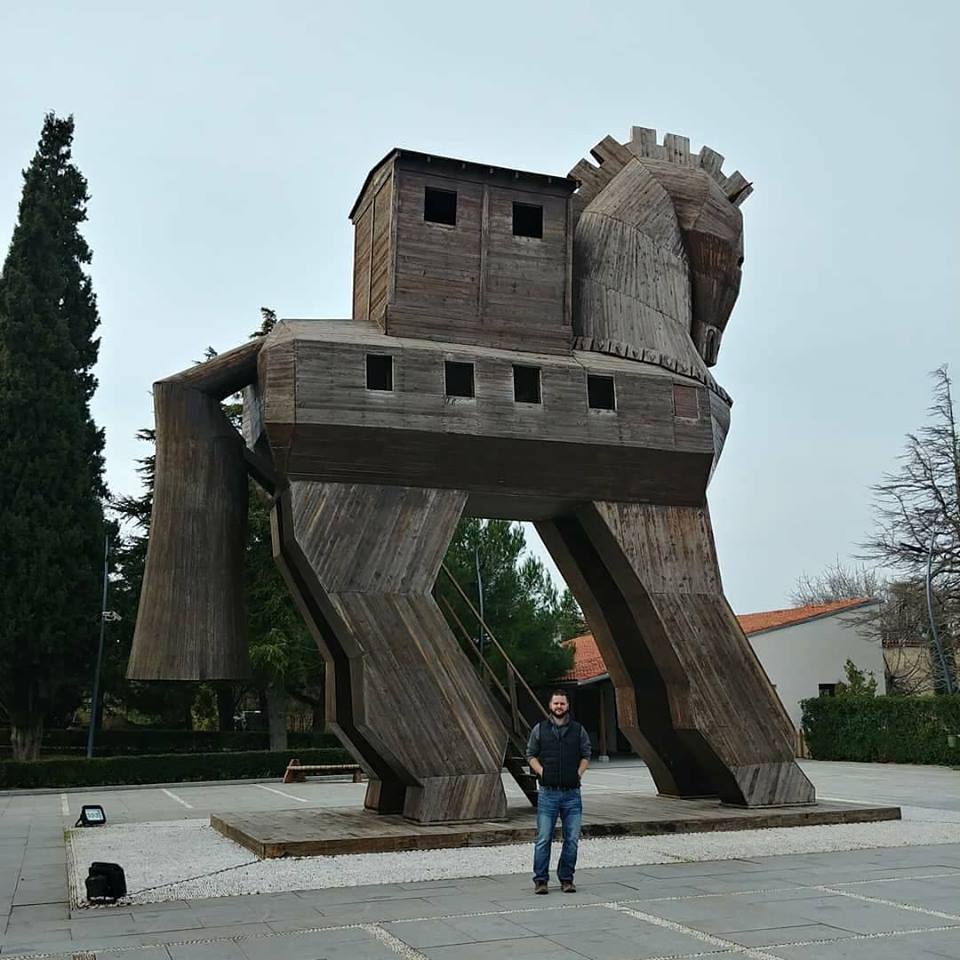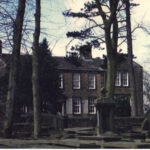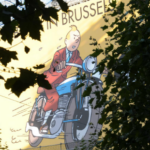Blog Post
Walking the walls of Troy
By Jonathon Van Maren
Driving through the winding, cobble-stoned village of Troy, it looks at first glance simply like another lazy Turkish town. There are old men trudging along the road, barely looking up as our car comes by. There are equally disinterested dogs sunning themselves on front steps. Only the enormous signs fastened to the stone walls note that this is a different sort of place than the others. “Troy is perhaps the most unique place to ever have existed on earth as the symbol of an eternal existence, having lived through love, struggle, death and destruction,” one reads, “and having been reborn from its ashes every time.” Or as Homer himself wrote: “Like the generations of leaves, the lives of mortal men. Now the wind scatters the old leaves across the earth, now the living timber bursts with the new buds and spring comes round again. And so with men: as one generation comes to life, another dies away.”
We would know nothing of those bygone generations if it were not for the great poet Homer, who launched Troy into immortality with his magnificent verses. It is because of his epics, the Iliad and the Odyssey, that we know a city called Troy existed and that great things were done there by great men. In fact, we know very little about Homer himself, since the only documents referring to him are from the 6th and 7th century BC, and he was probably born around the 8th century BC somewhere between Antique Foca in Western Anatolia and Smyrna (modern-day Izmir.) Scholars believe he wrote the Iliad around 720 BC, and the Odyssey some twenty years later. These epics “are acknowledged,” a sign in multiple languages says proudly, “as the origins of Western literature today, and the city narrated in them forms one of the most exceptional bonds between the East and the West.”
The Iliad is the first recognized work of Western literature, and the stories it records have been told around flickering campfires for nearly three thousand years. Both epics deal with the events of the Trojan Wars, which began when Paris, a Trojan prince, abducted Helen of Sparta, the wife of King Menelaus. Paris had been called upon by Zeus to choose which of the goddesses was the most beautiful, and as each goddess attempted to bribe Paris, Aphrodite promised Paris the most beautiful woman in the world if he decided to choose her. Of all the beauties in the ancient world, Helen, the daughter of Zeus, was known to be the fairest of them all, and had been ardently pursued by many great men before her mother’s husband chose the king of Sparta to be her husband. Her twin sister, incidentally, married Agamemnon, King of Mycenae.
And so it was that shortly after choosing Aphrodite, Paris left on a mission to Sparta, where he first laid eyes on Helen. He was instantly bewitched, and in a stunning act of diplomatic suicide, fled with the king of Sparta’s wife, aided by the romantic machinations of Aphrodite. “There is the heat of Love,” wrote Homer, “the pulsing rush of Longing, the lover’s whisper, irresistible—magic to make the sanest man go mad.” Menelaus was livid, and called on his brother Agamemnon to join him in wreaking revenge on the upstart Trojan prince who had stolen his beautiful bride. The formidable brothers rallied the Greeks and left with an enormous fleet to raze Troy and retrieve Helen, the beauty who thus became, in the famous words of Christopher Marlowe, “the face that launched a thousand ships.” Adultery would give birth to bloody war and thousands of men falling in battle, “sprawled across the field, craved more by vultures than by wives.”
The greatest warrior accompanying the Greek force was Achilles, the son of the immortal Nereid Thetis and Peleus, the king of the Myrmidons. The tension between Agamemnon and Achilles is one of the Iliad’s primary plotlines, with Achilles furiously withdrawing from the ten-year siege of Troy when Agamemnon takes Briseis, the warrior’s slave girl taken in battle as a concubine, for his own. When Achilles abandoned the Greeks with his Myrmidon men, the Trojans began to gain the upper hand, although Menelaus defeated Paris in single combat while Helen watched the battle from the city walls with the elderly King Priam, bitterly regretting her decision to flee Sparta. The Greeks begged Achilles to return, with Agamemnon even promising to return Briseis to him. When the Trojan prince Hector began to wreak havoc among the Greeks, Achilles begrudgingly sent his friend Patroclus, dressed in his own armour, to take his Myrmidons and drive the Trojans back. Patroclus, drunk with victory, disregarded the orders of Achilles and pursued the fleeing Trojans too far, meeting Hector on the battlefield. Initially believing him to be Achilles, Hector killed him.
This tragedy leads Achilles, wracked with grief and rage, to rejoin the Greeks, killing Hector and desecrating his body. His friend avenged, a funeral is held for Patroclus. The heartbroken Priam retrieved his son Hector’s corpse and did the same, and both men wept bitterly to the starry sky. It is here that the bloody tale ends, to be resumed again in the Odyssey. The Greeks finally gain access to the heavily fortified city of Troy by famously leaving an enormous hollow wooden horse outside the walls of the city and pretending to depart, tired of the siege after long years of fighting. The Trojans, sure that they had achieved victory at last, opened the city gates and pulled the horse inside the city as a trophy. While they celebrated and slept, the men hidden within the horse opened the city gates, the Greeks entered with a roar, and Troy and the Trojans were put to fire and the sword.
These heroes still stare out over the battlefields today. Charmaine and I soon discover a cobblestoned veranda overlooking the sweeping green fields, with busts of Priam, Achilles, Helen, Hector, Paris, and even Homer gazing solemnly into the distance. Nearby is the new Troy Museum, which opened just a few months ago, an enormous, rust-coloured cube rising out of the vineyards and accessible by a ramp that seems to lead directly into the earth. The Museum is divided into nine levels, each featuring history and artifacts from the various levels of the ruins of Troy, including gold jewelry from 2400 BC. There is also a bust of Caesar Augustus, marble statues of long-dead men as pale as corpses but somehow still alive, and a magnificent sarcophagus featuring intricate hunting scenes and battle scenes which once held the corpse of a 25-year-old man. The display informs us that he probably died in battle with the invading Persians.
“Our adventure in this region started 5,000 years ago,” a plaque near the entrance reads. “Once upon a time, when this place, which is now a plain, was still a gulf, we were a brilliant city on trade routes. We witnessed celebrations and heroism. We experienced war and fires. For years, historians have been searching for clues about our past, filled with secrets…Welcome to our land.” When we stop for lunch across the road at a little restaurant that also features a combination of postcards, souvenirs, and some old movie props from various films about Troy, the middle-aged proprietor wants us to know that he is a Trojan, born and raised. This is his land, he explains as he hands me a shimmery black coffee. He then offers us a tour of the Trojan excavations. His tours, he informs us, are better than anyone else’s. After all, he is a Trojan, and this is where his people lived. He strokes his black mustache and says he understands when we tell him that we don’t need a guide.
The archaeological dig is only a few minutes away, and upon arrival, we are greeted by an enormous wooden horse so large we could climb into it. It is being photographed enthusiastically by a large crowd of Chinese tourists, who then immediately decamp to the gift shop. (One of them stops to photograph an awkward ice cream vendor who suddenly does not know what to do with his hands.) The ruins are phenomenal, descending layers of cities beneath cities, the history being shared by Hittites, Greeks, and maybe—just maybe—the famous Troy of Homer’s epics. The site was first identified in 1822, by Scottish journalist Charles McLaren, and Frank Calvert, an American, began preliminary excavations in 1866. Then Heinrich Schliemann arrived from Germany and began to hack his way through the site, digging a deep trench that you can still see there today. Schliemann, the man who famously announced that he had “gazed upon the face of Agamemnon” when he discovered a funeral mask in Mycenae, did such a hatchet job that one historian sarcastically noted that he had managed to do to Troy what the Achaeans could not: Destroy it utterly.
Charmaine and I wind our way through the ruins on a boardwalk that runs past the red brick foundations of the metropolis that predated even the ancients, up to ramparts that were so famously strong the trickery of the Trojan horse was necessary where battering rams failed, and through the slumping stone walls of the city that would not die. It is surreal to pause and wonder whether these stones once rang with the voices of Homer’s heroes—or if they had borne witness to scenes even more incredible still. Some of the ruins are charred with fire, and Homer’s descriptions of battle come to mind: “A fearful din of spears and bossed shields, clashing in a fierce and furious melees of bronze-breasted fighters. And there the screams of the dying were mingled with cries of triumph as blood flowed over the earth. As when two winter torrents flow down from great mountain springs to mingle their turbulent floods; where the two streams meet and thunder on down a deep gorge, and the shepherd far off in the mountains hears the roar, so now as the two armies clashed in the fury of battle a terrible roar of toil and shouting arose.”
That this city—these cities—saw such battles is not in doubt. Fire-damaged human remains, arrow heads, and mountains of other evidence prove that beyond a shadow of doubt. But did the Trojan Wars of Homer’s epics actually take place, and were they fought by men named Hector, Achilles, and Agamemnon? It is, of course, impossible to know. The events described by Homer were so long ago that they would have been taking place at approximately the same time that the Gideon of the Bible was going to war against the Midianites with an army of three hundred Israelites. But one layer of these ruins, Troy VII, is thought by some historians to be the Troy of Homer, and recent geological discoveries indicate that the ancient Trojan coastline would match the Homeric geography almost exactly. Further investigations done by partnerships of classicists and geologists also indicate that the available topographical evidence as well as the geographical indicators match the battle descriptions in the Iliad, but the men and women who lived and loved and fought and died have long ago faded into the mists of history, and there are only scars and echoes left to bring us fragments of their lives.
It must be said that the ancients never doubted Homer’s tales of Troy and believed them to be history as well as legend. Herodotus wrote that the Persian king Xerxes came here to sacrifice a thousand heifers to “Athene of Ilion,” the Greek name for ancient Troy, before his invasion of Greece in 480 BC. Several years ago I stood at the spot where the immense forces of Xerxes faced three hundred Spartans under Leonidas at Thermopylae, the king of the warrior people that Homer says once besieged Troy to retrieve their queen: the geography has changed there so much that it is nearly impossible to conjure up the famous scenes in the mind’s eye. It was this same Xerxes, most historians believe, that married the Jewish maiden Esther upon his return from the failed mission to subjugate Greece. Alexander the Great visited here too in 334 BC, to make sacrifices at the tombs that purportedly belonged to Achilles in Patroclus. To the ancients, the men of myth stone had once been men of flesh and blood.
It may not really matter whether the men described by Homer really lived, or whether the poet simply combined many mighty men and their great deeds. Many scholars say that the Iliad obviously relies on much older traditions, and may simply be the collective inheritance of scores of storytellers, singers, and poets over many untold centuries, finally recorded by Homer, who was in all likelihood one of the first literate authors of his day, as the Greek alphabet was only introduced early in the 8th century BC. The Iliad was one of a genre of ancient poems known as “the Epic Cycle,” most of which are now lost to us or are only available in shreds or fragments. Some of these poems may have been able to tell us the many missing details of the Trojan Wars that Homer leaves out, or grant us new insights. Short of an earth-shattering discovery, we will never know. As Charmaine and I leave the walls and ramparts of Troy and head past the giant wooden horse towards the parking lot, I glance across the plain and wonder: What else lies buried there?
